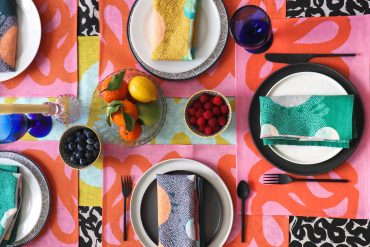* images (top-left, bottom-right, and middle): LeeAnn’s Zentangle-ing, (top-right, bottom-left): Lisa Rene Aguilera
One of the wonderful aspects of teaching virtual workshops is that I get to meet designers from a variety of backgrounds. From architects to illustrators, artists of all types come together to learn and share. In her introduction, recent Ultimate Guide to Repeats student Lisa Rene Aguilera mentioned that she loved Zentangles. I was immediately intrigued, went to Google, and discovered an entire world of swirls, loops and other fun details. I haven’t tried the technique, or taken any of the courses, but it looks like a great exercise to use when one is feeling stuck, uninspired and you just want to let those creative juices fly! Lisa was kind enough to answer a few of my questions, which I share below. If you give it a try, feel free to post your Zentangle to the FB wall. Have fun!!
What is Zentangle?
Zentangle is an art form based on a few simple elements, dots, border, a “string” and tangles. Tangles are patterns that can be designed, deconstructed, and re-created in the method created by Rick and Maria, which is what distinguishes them from doodling or other patterns that are not tangles. Zentangle can be practiced with minimal expense…paper, a pencil and a pen.
As a practice, Zentangle is an art form that is best experienced when allowed to unfold. The materials and process are simple and the end result, the art work, can range from simple and elegant to complex and breath-taking.
How did you discover the Zentangle technique?
I came to know the art of Zentangle in the Summer of 2009 when I created a flickr account and began exploring the work of different artists and art groups. Zentangle, ZIAs, and Zendala groups immediately jumped out at me and I was compelled to learn more. I found the Zentangle website and learned the story of the its creators, Rick Robert and Maria Thomas.
How can textile designers use Zentangle in their work?
Rick and Maria have drawn inspiration from the natural and human-made world around them, much as I would imagine that all artists and designers do. But artists and designers also draw inspiration from each other. So I would venture to say that textiles designers can use the tangles as a resource for patterns, seeing objects and the environment in a new way, and seeing how other artists combine and put their unique twist on the Zentangle art form.
Zentangle has a worldwide presence. Rick and Maria are very open to sharing their tangles and supportive anyone inspired to use their methods and tangles.
Where can designers go to learn more?
You can learn more about the origins, method, practice and art form of Zentangle at zentangle.com. Here is a link to a tutorial featuring, Mooka, one of my personal favorites.
You will also find a wealth of resources and featured artists and authors on their blog. There is also an official Zentangle flickr group , as well as others.














